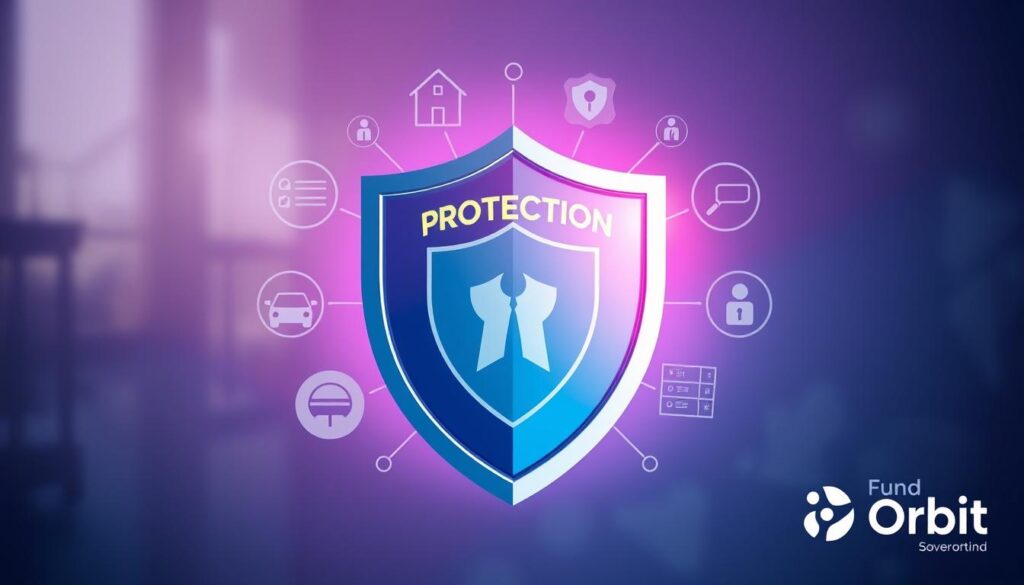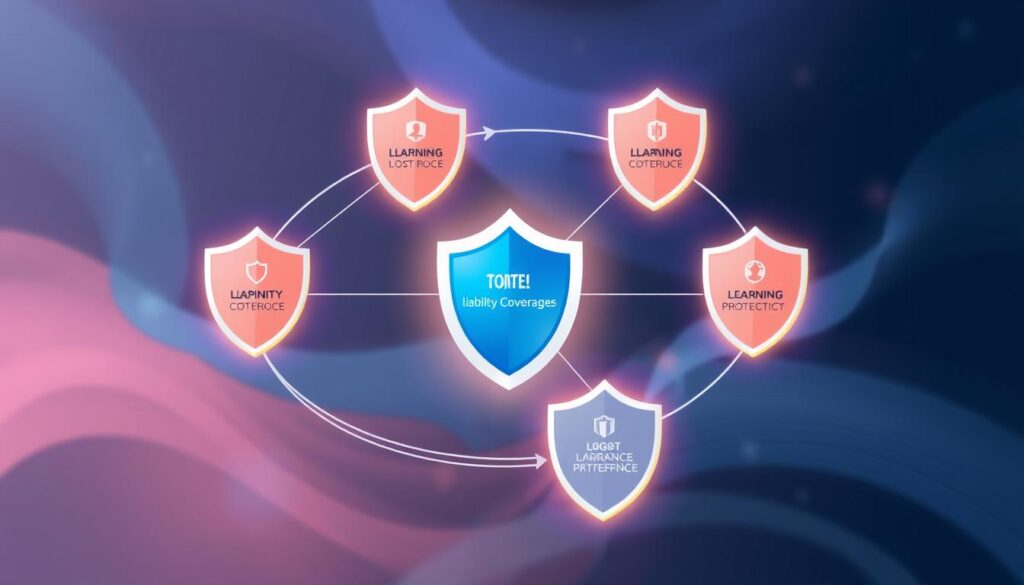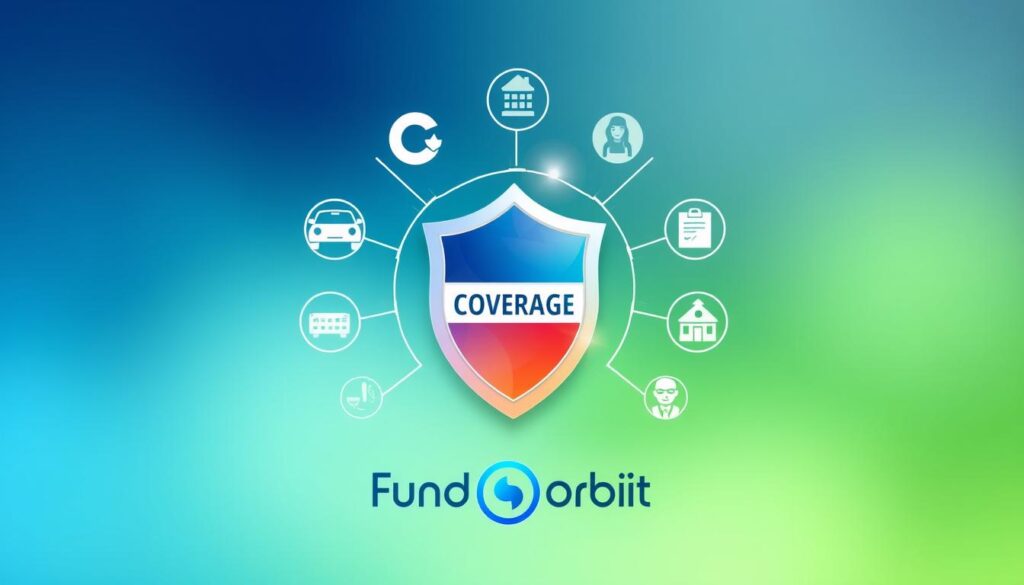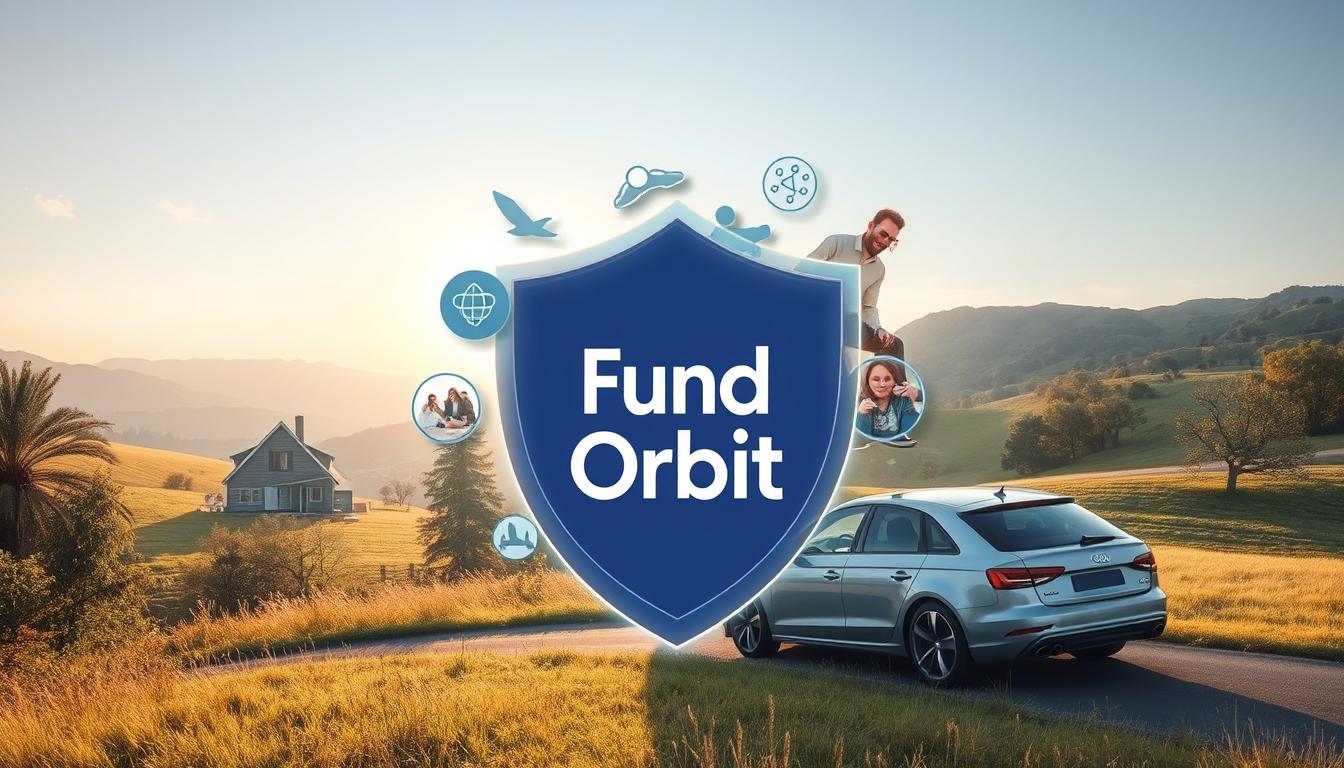Understanding insurance can be tough, but we’re here to help. Our company offers many options, including full coverage, to protect you from surprises. Full coverage is for damages not caused by accidents, like theft or natural disasters. Visit our website at comprehensive coverage to learn more about it.
Key Takeaways
- Comprehensive coverage protects against non-collision related damages, such as theft or vandalism.
- Comprehensive coverage is not required by law, but may be required by lenders for leased or financed vehicles.
- The cost of this coverage varies based on your vehicle’s value and where you live.
- It can help pay for repairs or a new car minus your deductible.
- About 77% of drivers in the U.S. have some form of this coverage.
- It also covers temporary cars, new cars, and vehicles not owned by you but used by the policyholder.
- Choosing a higher deductible can lower your premiums but increase what you pay out-of-pocket if something happens.
Understanding Coverage Types
Insurance coverage comes in many types. Two key ones are comprehensive coverage and liability coverage. Comprehensive coverage helps with damage from theft, vandalism, and natural disasters. Liability coverage helps if you’re in an accident and need to pay for damages or injuries.
To learn more, check out insurance coverage websites. They explain all the options, including liability coverage.
Here’s what sets comprehensive coverage and liability coverage apart:
- Comprehensive coverage helps with theft or damage from non-collision incidents like fire, vandalism, or natural disasters.
- Liability coverage covers legal fees and payouts for property damage or bodily injury claims if you’re at fault in an accident.
Knowing the difference between these coverages is key. Liability coverage is often required by law. It’s important to have enough to protect yourself and others in case of an accident. By picking the right mix of comprehensive and liability coverage, you can get the insurance you need.
Benefits of Comprehensive Coverage
Choosing the right coverage options can be tough. There are many types to pick from. Comprehensive coverage is key, protecting against theft, vandalism, and natural disasters.
Every year, about 765,000 cars are stolen in the U.S. Over 1.5 million deer accidents happen too. With this coverage, you’re safe from these risks and your car’s value goes up.
Protection Against Various Risks
Comprehensive coverage shields you from unexpected events like animal hits, hail, or natural disasters. It’s vital for drivers in risky areas. For example, Montana was the most dangerous state to drive in 2022.

Peace of Mind for Drivers
With this coverage, drivers feel secure against many risks. It reduces financial worries from car damage or theft. This lets drivers enjoy their drive more. Think about what coverage fits your needs and budget.
Advantages of Liability Coverage
Choosing the right coverage plans can be tough. But, it’s key to see the benefits of liability coverage. It offers financial protection in case of an accident. Most states require it by law.
This coverage is a must-have in any good plan. It shields drivers from financial hits after accidents.
Liability coverage has many benefits. Here are some:
- It gives legal protection to drivers, covering legal fees if sued.
- It pays for damages, helping with repairs or replacing damaged property.
- It ensures you follow state laws, avoiding fines or penalties.
Liability coverage is also more affordable than full coverage. It’s often called “pennies on the dollar.” This means it only adds a few dollars to your monthly bill. It offers a lot of financial protection for a small price.

Liability coverage is a must-have for any auto insurance policy. It gives financial safety and peace of mind. By knowing its benefits and picking the right plans, drivers can get the best coverage for their budget.
How to Choose the Right Coverage
Choosing the right coverage involves looking at our personal needs, state laws, and our budget. Having a policy that covers everything can give us peace of mind. It means we’re protected against many risks.
When picking a policy, we should think about how much risk we can handle. We also need to consider how much money we want to protect. A good policy should fit our budget and needs.
Comprehensive coverage is a good choice because it protects against theft, vandalism, and natural disasters. Most states require car owners to have insurance or show they can pay for damages. This coverage costs about $11 a month for six months, which is affordable for many.
Some important things to think about when choosing coverage include:
- Personal needs: We need to decide how much risk we can take and how much money we want to protect.
- State requirements: We should check the minimum insurance laws in our state and make sure we meet them.
- Budget considerations: We need to figure out how much we can spend on coverage and find a policy that fits our budget.

By thinking about these factors and picking the right coverage, we can protect ourselves. This way, we can avoid financial problems if something unexpected happens. Having the right coverage means we’re ready for anything.
Common Misconceptions About Coverage
We often hear wrong ideas about insurance coverage. This can cause confusion and bad choices. Many think you don’t need to have full coverage. But, full coverage is key because it guards against many dangers like natural disasters, theft, and vandalism.
Some also believe that just having liability coverage is enough. But, liability only helps if you hurt someone else in an accident. It doesn’t cover your own car. Knowing the difference between full and liability coverage is key to making smart insurance choices.

- Comprehensive coverage is not necessary
- Liability coverage is enough to protect drivers
- Insurance coverage is too expensive
But, the truth is, insurance is a smart investment. It helps protect your money if something unexpected happens. By learning about full and liability coverage, drivers can choose the best insurance for them. This way, they can be sure they’re well-protected on the road.
| Type of Coverage | Description |
|---|---|
| Comprehensive Coverage | Covers damages to the driver’s own vehicle, including natural disasters, theft, and vandalism |
| Liability Coverage | Covers damages to others in an accident, including bodily injury and property damage |
By clearing up these wrong ideas, drivers can make sure they have the right insurance. It’s important to understand the value of both full and liability coverage. This helps drivers make wise choices about their insurance.
Factors That Affect Your Coverage Costs
Many things can change how much you pay for coverage. We know you want to know what affects your premiums. For example, the cost of liability insurance can change a lot. This depends on your driving history, the type and age of your vehicle, and where you live.
Some important things that can change your coverage costs include:
- Driving history and behavior, with drivers having multiple moving violations or accidents facing higher rates
- Vehicle type and age, with high-cost-to-repair vehicles or cars with poor safety ratings leading to higher premiums
- Geographic location, with urban drivers experiencing higher insurance rates due to increased risks associated with accidents, theft, and vandalism
Also, personal things like age, marital status, and credit score can change your costs. Young drivers under 25 often pay more for liability insurance. Singles might file more claims, which can raise their premiums. Choosing to have more liability coverage than the state requires can also increase your costs.

It’s key to think about these factors when picking your coverage. Knowing how they affect your costs helps you make smart choices. This way, you can find the best coverage for your needs and budget.
Tips for Lowering Coverage Premiums
Finding the best coverage that’s affordable is key. We’ve got some tips to help you save on your coverage plans. These strategies can lower your premiums without sacrificing quality.
One smart way to cut costs is by bundling insurance policies. Many providers offer discounts for this. You can also save by quoting online, going paperless, and setting up autopay.
Discounts and Savings Opportunities
- Multi-policy discounts for bundling auto and property insurance
- Discounts for low mileage, good grades, and safe driving records
- Savings opportunities for vehicles with advanced safety features and anti-theft systems
It’s important to regularly review your coverage. This ensures you’re getting the right plans for your needs. By doing this, you can avoid paying for coverage you don’t need. These tips help you get affordable, yet complete coverage.
Follow these tips and use available discounts to find great coverage within your budget. Always review your policy and adjust as needed. This way, you’ll get the most from your coverage plans.
| Discount Type | Discount Percentage |
|---|---|
| Multi-policy discount | 10-20% |
| Low mileage discount | 5-15% |
| Good grades discount | 5-10% |
When to Update Your Coverage
Our coverage needs can change over time. It’s important to review and update our policies. Comprehensive coverage helps protect us against different risks. We should update our policies after big life changes, like getting married or having kids.
Some key events that may trigger the need for an update include:
- Major life changes, such as a change in marital status or the birth of a child
- Vehicle upgrades or purchases, which may affect the cost of comprehensive coverage
- Shifts in driving patterns, such as a change in commute or driving habits
It’s important to check our coverage needs often. This way, we can make sure we have the right protection. With a comprehensive policy
By keeping up with our coverage needs and updating when needed, we ensure we’re protected. This gives us the comprehensive coverage we need to feel safe on the road.
Frequently Asked Questions About Coverage
Understanding your auto insurance coverage is key to being safe on the road. Let’s answer some common questions to clear up any confusion.
How to File a Claim
If you’re in an accident or your car gets damaged, call your insurance right away. They’ll walk you through filing a claim. You’ll need to share what happened and provide some documents.
What to Do After an Accident
Stay calm after an accident and gather important info. Get the other driver’s details, insurance info, and license plate. Take photos of the scene and damage if you can. This helps with your insurance claim.
Understanding Policy Terms and Conditions
When you look at your auto insurance policy, read the terms and conditions carefully. They explain what’s covered, like deductibles and liability limits. Knowing these details helps you choose the right protection.
Our team is ready to help you understand auto insurance. Knowing your coverage options and asking the right questions helps you protect yourself and your car.


